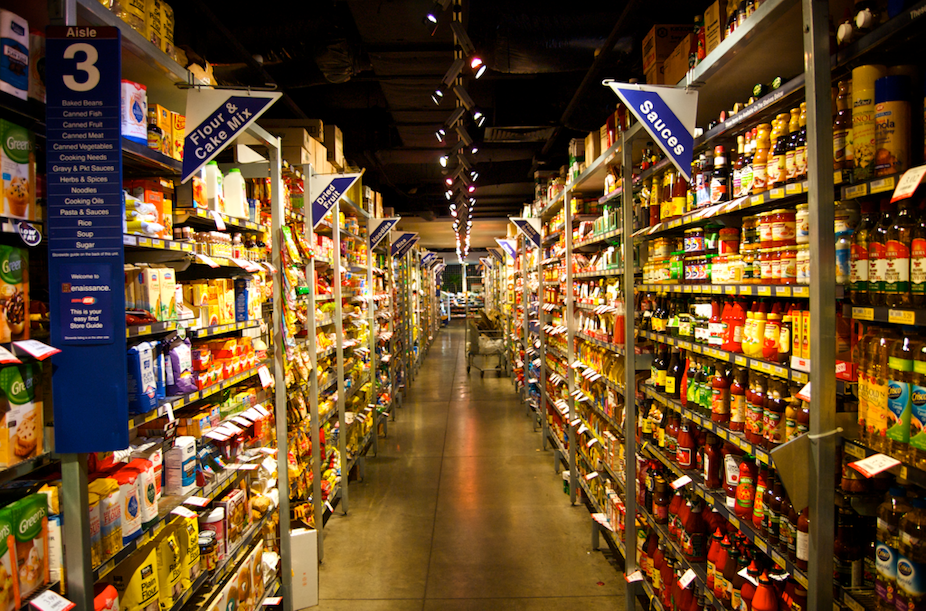Australia has one of the more rigorous food labelling systems in the world for genetically modified (GM) attributes. All foods with more than 1% GM in any ingredient are required to be identified as “genetically modified” on the label, other than at restaurants.
But some stakeholders are demanding more extensive labelling. Given that the current system is already quite tough, we need to ask why more is needed. But first, let’s look at what we do right now.
Peculiar attention
There’s a great disparity between how different foods are labelled in Australia.
Non-GM food products with very real serious risks of containing allergens, such as nuts, are allowed on the market with no more than a “may contain” label. And we still accept artificial food ingredients with established health risks, such as trans fats, without a labelling requirement.

But lobbyists and consumer interest groups have focused on the labelling of genetically modified food. This seems to be much more of a political and commercial marketing campaign than one based on science, the environment or health.
There’s no scientific evidence for health or environmental risks from genetically modified crops. To the contrary, there’s scientific consensus that foods from GM crops are at least as safe as foods from conventional crops.
And, in contrast to genetically modified crops, conventional plant breeding is not routinely evaluated for unintended effects, even though detailed evaluation consistently shows GM crops to be less risky than conventionally bred crops.
Despite the greater riskiness of conventional breeding, there has been no major campaign for special labelling of new crop varieties.
What’s more, there is no concerted campaign for compulsory labelling for other food-related issues of concern to consumers, such pesticide use or child labour. Indeed, despite international concern about child labour in cocoa production, there is no required labelling of chocolate for such disclosure.
The Greens can’t even get much support for a campaign on country-of-origin labelling for food. It seems odd that if you want to eat GM-free in Australia for whatever reason, you can make choices more easily than trying to find foods sourced from Australian farms.

Consumers already have access to a range of labels and information allowing them to avoid foods grown from genetically modified crops. And even though there are no genetically-modified fresh fruits or vegetables in Australia, you’ll see plenty of “non-GM” labels if you take a quick walk through the supermarket.
This is peculiar in itself because there are such labels on canola oil even though genetically-modified commercial canola oil is not detectably different from oil originating from plants that are not genetically modified.
Consumer choice?
Consumer choice is clearly not the most important value here. So, what else could be going on?
The leading Australian promoters of campaigns for GM labelling don’t reveal their funding sources. But information about the financial interests behind the same push is available in California, where there’s a current ballot proposition to require labelling of GM foods.
The leading funder of the labelling campaign in California, businessman Joseph Mercola, is refreshingly honest about his motivation – and it’s not consumer choice. Mercola has contributed more than $1.1 million to the campaign so far, and also does business in Australia.
Mercola has said, “Personally, I believe GM foods must be banned entirely, but labelling is the most efficient way to achieve this. Since 85% of the public will refuse to buy foods they know to be genetically modified, this will effectively eliminate them from the market just the way it was done in Europe.”

Mercola is a colourful character. The US Food and Drug Administration (FDA) in 2011 warned him against making illegal claims regarding the usefulness of his alternative medicines for detecting, preventing and treating disease.
It seems his campaign is not about better consumer choice, but rather elimination of consumer choice. Consumers tend to believe that labels warn of unspecified dangers and people such as Mercola seek to exploit their fears.
Retailers of organic food and other “natural products” also gain a marketing advantage from frightening publicity about genetically-modified foods.
Besides Mercola, the major funders of the GM labelling initiative in California include Nature’s Path Foods, the Organic Consumers Fund (which includes 3000 cooperating retail coops, natural food stores, and farmers markets) and Dr Bronner’s Magic Soaps. All these companies contributed between $300,000 to $985,000 each to the campaign.
Debate about GM crops and their labelling will undoubtedly continue. But we need to be honest about the motivations of at least some of the business interests behind these campaigns. And we need to be aware that the campaign to go further than what is already a rigorous labelling regime is more complicated than just giving consumers choice.

